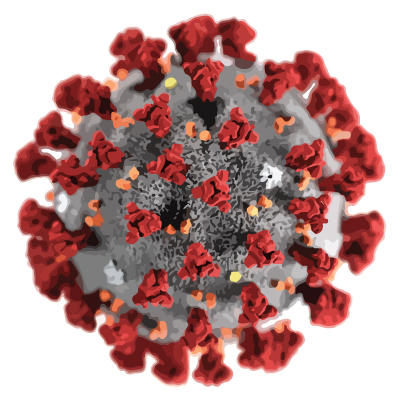Dispelling the myths surrounding the coronavirus outbreak

With much of this false news and disinformation spreading rapidly via social networking services, the JoongAng Ilbo fact-checked the information about the novel coronavirus to dispel any fake news.
1. Can the coronavirus be spread by someone who is not showing any symptoms?
Yes. According to a study written by health experts from Frankfurt and published in the New England Journal of Medicine on Feb. 18, the coronavirus can be transmitted from a patient who shows no symptoms. The research team studied 126 patients, who were transferred to Germany from China’s Hubei Province on Feb. 1 and placed under a 14-day quarantine measure, and discovered that, of them, two people tested positive for the virus but showed no symptoms.
2. The major way the virus spreads from human to human is via droplet transmission, but is it also aerosol transmissible?
It’s a highly controversial issue among many scientists and health experts. Droplet transmission occurs when respiratory droplets generated via coughing, sneezing or talking contact susceptible mucosal surfaces, such as the eyes, nose or mouth. The droplets in the air can travel from 1 to 2 meters [3.3 to 6.6 feet] away. Aerosol is small particles that measure less than 0.1 micrometers. The World Health Organization and local health officials argue that the coronavirus cannot be transmitted by aerosol particles. However, China’s health authorities on Feb. 8 have admitted that “the major routes of the coronavirus infection are respiratory droplets and close contact transmission, as well as aerosol transmission.” If people stay in an enclosed space for a long period of time, it is possible for them to be infected with the virus through aerosol particles. In this situation, masks are the only solution. The Korea Filter (KF) 94 masks can filter out 94 percent of 0.4-micrometer particles. Although the size of the coronavirus particle is about 0.1 or 0.2 micrometers, if the virus-containing particles float in the air in forms of droplets or aerosol, the KF94 masks can block them.
3. Is it true that using a public restroom increases your risk of contracting the coronavirus?
Zhong Nanshan, head of China’s National Health Commission investigating the novel coronavirus outbreak, announced on Feb. 19 that the coronavirus was found in human feces. However, infection is another issue. As of now, direct contact transmission, especially via hands, is as risky as droplet transmission. People who come into contact with infected feces or urine through public restrooms’ toilets may get infected with the virus when they touch their noses or mouths. This applies to not only the toilets, but also other objects that have potential of infecting people. Although the number of reported infections among children is remarkably low, adults may get infected with the virus through their children who have poor personal hygiene habits. This is the reason why personal hygiene habits such as washing hands are very important to all individuals.
4. Where did the coronavirus originate?
Although many health experts suspect the virus may have started in a seafood market in Wuhan, China, some are raising other arguments. According to a paper published in Science magazine, an academic journal of the American Association for the Advancement of Science, on Jan. 27, among the first 41 hospitalized patients who had confirmed infections, 13 had no link to the seafood market. Also, a paper written by a large group of Chinese researchers from several institutions and published in the British medical journal The Lancet offers details about the first 41 hospitalized patients and argues no relevance between the market and virus. Recently, researchers from the Chinese Academy of Sciences also conducted research on 93 confirmed patients and came up with the result that the virus did not originate from the seafood market.
5. When will the coronavirus outbreak end?
We do not know when it will end. However, the U.S. Centers for Disease Control and Prevention told CNN on Feb. 13 that “the virus is probably with us beyond this season, beyond this year.” It also said the virus will become a community virus at some point in time, this year or next year.
6. What are the chances of another new infectious disease emerging in the future?
Kim Yon-su, president of Seoul National University Hospital in Jongno District, central Seoul, warned that a new infectious disease just like the coronavirus will emerge in the next five years. The novel coronavirus is of the same coronavirus species as Middle East respiratory syndrome, or MERS, and severe acute respiratory syndrome, or SARS. These coronaviruses are a large family of RNA viruses that have a high mutation rate. In other words, a mutant coronavirus can emerge at any time. Nowadays, virus mutations have been occurring more rapidly compared to the past. There are several reasons behind this phenomenon including climate change and the destruction of the ecosystem.
BY CHOI JOON-HO, CHEA SARAH [chea.sarah@joongang.co.kr]










with the Korea JoongAng Daily
To write comments, please log in to one of the accounts.
Standards Board Policy (0/250자)